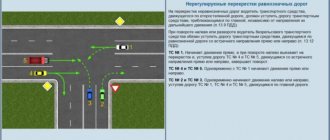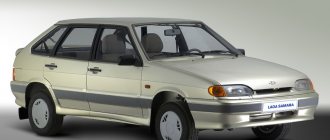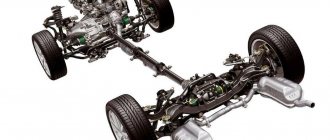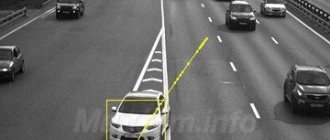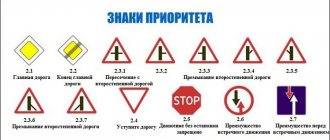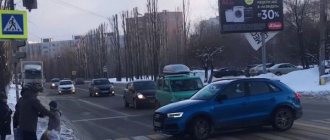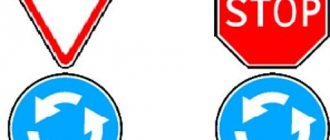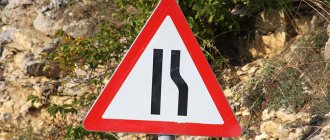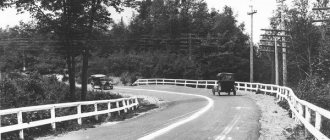What is a roadway? This question is asked by many citizens of our country who do not particularly understand traffic rules and do not have a driver’s license. Some people assume that the roadway is the entire road on which pedestrians and vehicles travel. In fact, everything is not quite like that. The carriageway is just one of the elements of the road, intended for the movement of trackless vehicles. This concept will be discussed in more detail in this article.
Definition
What is a roadway? What is it for? Here we can immediately say that the roadway is one of the main elements of the road, necessary for the movement of trackless vehicles. In addition, if there are no sidewalks or curbs, people can walk on it, while exercising maximum caution. It should also be noted here that cyclists also have the right to ride on the roadway, because Special paths for these road users do not exist in all localities. In this case, they should be extremely careful.
Railway transport routes can be combined with the roadway. In large cities, the rails for trams simply cross the asphalt surface.
Therefore, those citizens who are interested in the question of what a roadway is should know that it is a component of the road necessary for the movement of trackless mechanical transport (cars, scooters, motorcycles, buses).
Basic terminology
The basis of traffic rules terminology includes the concept of “road” and everything that is attached to it.
A road is a conditioned or equipped part of the surface. The lane along which traffic occurs. The concept of a road includes several elements, each of which will be listed further in the subsections.
Each of these elements constitutes a road on which both pedestrians and drivers of personal and public vehicles need to navigate, because failure to understand the road separation structure can lead to deaths.
However, it is worth understanding that the road is not only a strip covered with asphalt. It can come in many forms:
- there is a city road with sidewalks;
- There is also a suburban type of road that does not have sidewalks, but has shoulders;
- there are cableways;
- Bridges that carry vehicle traffic can also be considered roads;
- a burnt wide strip in the middle of the steppe or a “traveled” strip in the snow outside the city, which are so often found, can be considered a road; such roads are called seasonal or temporary and serve until they are replaced by a strip more optimally equipped for the movement of vehicles, but It’s still a road and the same rules apply on it as on a city road.
How can you recognize
What is a roadway? This is one of the elements of the road, covered with asphalt and intended for the movement of trackless vehicles. In addition, it can be covered with crushed stone, paving stones, or simply have a soil base. It will still be a roadway. Those. its main feature is that it is intended only for the movement of mechanical trackless transport.
Stripes
What is a carriageway? This is a special element of it, necessary for the passage of trackless vehicles, which can be divided into lanes. This is very convenient, especially in big cities.
The lanes of the roadway are always wide enough to allow traffic to move in one row. They are necessary so that the driver does not get lost along the way on the vast road surface. Traffic lanes allow a citizen to freely and safely travel in his own direction and not drive into oncoming traffic.
Special markup
The lanes of the roadway are always separated by special markings. In this case, it is easier for the driver to navigate in his direction of travel. But what should the latter do if it’s winter outside or there are simply no markings? You will have to determine the lane yourself. To do this, the driver needs to mentally divide the roadway in half and select the right lane. Its left direction will be counter. Those. designed for traffic from the opposite side.
Need to know
What is a carriageway? Its definition is quite simple. The carriageway is an element of the road that is intended for the movement of trackless vehicles. The tram has nothing to do with it.
The roadway is the foundation of the entire road. On the sides it is limited by curbs and sidewalks. The width of the roadway depends on the intensity of vehicle traffic along it. It is determined by special markings. As a rule, the width of the roadway can be such that vehicles can move along it in several directions. This is very convenient for big cities.
There is no road without a carriageway. There may be no sidewalk or curb, which is considered quite natural. A road without a carriageway will be deprived of its main purpose.
Categories of highways
The width of the carriageway necessarily corresponds to its category. The classification is contained in GOST 52398-2005, as well as in Federal Law No. 257-FZ, Article 5.
There are five categories in total:
- the first (A, B, C) – high-speed four-lane highways (autobahns);
- the second is not high-speed four-lane highways, but also two-lane roads;
- the third is non-high-speed two-lane roads;
- fourth - ordinary roads with two lanes;
- fifth - single-lane roads.
Highways of the first category are necessarily equipped with dividing barriers, have multi-level interchanges, and underground pedestrian crossings (or across bridges). On roads of all other categories, fence lines are not required; in most cases, markings are sufficient.
A certain width of lanes is established in order to ensure traffic safety on highways. The following values are set:
- 3.75 m – for main highways and main streets of continuous traffic with 4-8 lanes (categories 1A, 1B, 1B, 2);
- 3.5 m - for main roads and streets with controlled traffic flow for 2-6 lanes, transport and pedestrian roads of regional significance, some local streets and secondary passages (categories 2, 3);
- 3 m – for residential streets with 2-3 lanes, park roads (category 4);
- 4.5 m – for single-lane non-high-speed roads (category 5).
A minimum width of 2.75 m is allowed, but only if repair work is being carried out or in other similar situations. Then a scheme to avoid the obstacle must be established.
Important! If the lane is narrower, then it is prohibited to move along it - cars may simply not pass each other.
What is written in the traffic rules
Traffic rules define the roadway as an element of the road intended for the movement of trackless vehicles. The tram is not one of those. The carriageway is only a component of the road. It can be covered with asphalt, gravel, crushed stone, paving stones. The road, in turn, includes the roadway, sidewalks and curbs. Its main purpose is the movement of vehicles.
What is a roadway? Traffic regulations decipher this concept as an element of the road, which is intended for the movement of trackless vehicles.
Tram tracks, medians and roadsides: what is important to know about them?
Tram tracks, like sidewalks, are not a mandatory element of the road. Many experts generally believe that this part of the road is uneconomical and should be eliminated. Another part of the road is designed to delimit the flow lines of moving mechanisms. It is usually called dividing. Road markings of this type are an integral part of the highway and are intended to regulate traffic and driving safety. As for the side of the road, its main purpose is to park or completely stop transport.
Roadways: how many can there be?
You can learn about the possible number of carriageways from the traffic rules. In this matter, a large share of responsibility is allocated to the median strips. It is with their help that it is possible to divide a common road into carriageways. To increase the level of safety for drivers and other road users, the road is usually divided into 2 travel zones. However, in many cities there are roads divided into 4 carriageways and very rarely into more. When a main road is divided into several carriageways, the main two lanes are considered to be the main ones. In this case, maneuvers, stops and other elements are performed on the two extreme parts. The roadway is divided into two lanes to allow vehicles to overtake and pass.
Location
The number of lanes for traffic on the roadway is determined using the applied markings. In its absence, the driver must drive the vehicle, moving in his own lane and without interfering with other cars. The left side of the roadway on two-way roads is considered the oncoming side. Driving onto it is only permissible if you are overtaking.
On roads where there are two or more lanes for traffic in one direction, driving to the far left is allowed only if all other lanes are occupied. This usually happens when there is heavy traffic flow.
In addition, cars that are not capable of reaching high speeds should only move in the rightmost lane of the roadway. A different arrangement of vehicles is permissible when overtaking, changing lanes, or detouring.
The road and its components
Once upon a time, in the old days, there were no roads that were familiar to us. From one settlement to another, people moved along forest and field paths. But gradually there were more and more roads and they took on an increasingly well-groomed appearance. The Romans in Europe and the Incas in America paved roads with stone and rubble and laid hard surfaces.
Roads in cities also began to be improved. In Russian cities, wood was used for their construction; in European cities, cobblestones and crushed stone were used.
Gradually the roads became the way we are used to seeing them.
So, a road is an artificial structure specially adapted for the movement of vehicles and pedestrians. Roads in cities can be called differently: street, avenue, lane, line. All of them consist of three components - the roadway, the sidewalk, and the curb. If the roadway is separated by green spaces, the road is called a boulevard.
The carriageway is the part of the road intended for traffic. And it is called that because cars, buses, trolleybuses, trams and other vehicles travel along it.
The roadway is intended for vehicles only. Pedestrians are not allowed to walk on it.
But the sidewalk is intended for pedestrians. This word is French, and translated it means “road for pedestrians.” In cities, sidewalks are usually covered with asphalt.
The sidewalks are slightly raised above the roadway. This is done so that any pedestrian can clearly determine the boundary between the roadway and the sidewalk. This border is marked with special stones that form a curb. On those streets where there are especially many pedestrians and cars, sidewalks are separated from the roadway not by a curb, but by metal fences.
Pedestrians should only walk on sidewalks.
What kind of roads are there?
Did you know that roads can be very different, depending on how the traffic on them is organized?
If cars drive down the street in only one direction, then such traffic is called one-way traffic. This is not to say that there are a lot of such streets, but they exist. And you should know how to behave on a one-way street.
On most streets, cars drive in both directions. This type of vehicle movement is called two-way traffic . To prevent cars from colliding and interfering with each other, such streets are divided by a solid white line (one or two). This line divides the roadway and is needed so that some cars drive in one direction and others in the opposite direction.
Another feature of roads is the direction in which traffic moves along them. In our country, traffic on roads is on the right . This means that all cars in Russia move forward on the right side of the roadway.
Driving on the right is also common in countries such as the USA, France, China and Germany.
In some countries (for example, in the UK, Australia, India), traffic on the roads is different - left-hand . This means that all cars in these countries move forward on the left side of the roadway.
Depending on whether traffic in the country is on the right or on the left, public transport is designed differently. In those countries where traffic is on the right, the doors on buses, trams, trolleybuses, and minibuses for passengers to enter and exit are always on the right.
In Russia, traffic on the roads is on the right.
We recommend watching:
How does a traffic light work?
Road users. Why are traffic rules needed?
Can the vehicle stop immediately?
The history of the emergence of traffic rules. History of traffic lights
Pedestrian crossings
Stop
The constant and continuous movement of traffic is very tiring for the driver. Therefore, he and the equipment simply need a little rest. A short stop of the vehicle (up to five minutes) is suitable for this. In this case, it is also necessary to follow traffic rules. You should not stop your car on the roadway if there is a shoulder nearby. This can create an emergency situation during heavy and high-speed traffic. In addition, every driver must remember that stopping is only allowed on the right side of the road. But it's best to pull over to the side of the road. If the action takes place in a big city, then the car can be parked on the edge of the roadway.
You can stop on the left side of the road in case of one-way traffic. This is only allowed in populated areas. And also in the case when there are no tram tracks.
Traffic violation on a narrow road
How can knowledge of traffic regulations help? The fact is that cases where an accident occurs because the roadway is too narrow are by no means uncommon.
Firstly, signs on such roads often cannot be installed so that they are clearly visible to drivers. And secondly, any obstacle on the roadway forces you to move into another lane, sometimes even in the opposite direction. Another type of violation is failure to comply with the speed limit.
An interesting situation often develops in winter or late autumn, when snow dumps or piles of leaves rise on the roadsides. Because of them, the road becomes much narrower, and drivers are forced to move in another lane, for example, to avoid an obstacle.
Attention! If the lane width is 2.75 m, then the maximum permissible speed is set at 30-40 km/h, and in residential areas it is reduced to 20 km/h. The driver is warned about this by a sign (speed limits during road repairs in the first case, and “residential zone” in the second).
If the lanes are separated by a solid marking line, you can even lose your license, so in such a situation it is reasonable to measure how wide the roadway actually is. The traffic police inspector can still impose a fine for crossing a continuous line, but if the width of the lane is less than required, it will be small.
Characteristic
What is a roadway? The definition of traffic rules describes it as an element of the road that is intended for the movement of trackless vehicles. Trams are not included in this category. The roadway can be covered with asphalt, crushed stone, paving stones, or have a different surface. The main thing is that it must be adapted for the movement of trackless vehicles (cars, buses, motorcycles). If the road has no curbs or sidewalks, then pedestrians can move along the edge of the roadway. The latter must also comply with traffic rules. Cyclists have the same right.
Traffic lanes on the roadway are determined by special markings. In its absence, the driver will do it yourself. The left lane of a two-way roadway is intended for oncoming traffic. Low speed vehicles should move closer to the edge of the right side of the road.
What is a roadway? And what are the differences between a lane and a road? | Topic author: Stanislav
Igor The roadway is a road + sidewalks.
The road consists of Mikhail lanes.
Vadim part of the road intended for vehicle traffic the carriageway is divided into traffic lanes The road consists of a carriageway and a shoulder the carriageway consists of traffic lanes
Gregory there are different roads, pedestrian and automobile and bicycle. . a traffic lane is a lane on the roadway along which one car is traveling, and the roadway is all lanes of traffic.
Sergey The roadway is a road + sidewalks. The road consists of Mikhail lanes.
Yuri The roadway is what transport moves along in all directions Evgeniy, the traffic lane is only that part of the road along which, for example, you are driving in one direction, the road is the entire roadway + space for pedestrian traffic.
Vitaly This is not about Russia! In Russia there is only an impassable part and not roads, but directions!
Georgiy Roadway
An element of a road intended for the movement of trackless vehicles.
Pavel A roadway is an element of a road intended for the movement of trackless vehicles. In addition to motor vehicles, Anatoly bicycles and mopeds, as well as Fedor pedestrians, can also move along the roadway. In the absence of shoulders, the roadway is also intended for stopping/parking vehicles. A road may have one or more carriageways, between which there are dividing strips. Often there are two carriageways, one for each direction, which increases traffic safety. Sometimes there are four carriageways - two central ones for main traffic and two side ones for local traffic and for stopping/parking. As a rule, each roadway has at least two lanes to allow for overtaking and passing.
Vasily Read the traffic rules, clause 1.2 - all the definitions are there Ivan.
Arthur A carriageway is an element of a road intended for the movement of trackless vehicles. Gennady
What is a roadway? Definition with photo
Very often this concept is confused with the road. However, the roadway is just an element intended for the movement of trackless vehicles. This is the same asphalt on which cars, motorcycles, and buses drive.
But even this is not the main criterion for such a thing as a roadway. After all, it can have a ground cover or be made of crushed stone or pebbles.
In addition, the roadway is always divided into traffic lanes by special markings. This is necessary for the convenience of drivers so that they do not interfere with each other and do not create an emergency situation on the road.
So, is the shoulder part of the road or a carriageway?
As a result, it must be said that the shoulder is a natural part of the road. And clause 12.1 of the traffic rules allows you to use it for parking or stopping. Also, according to clause 8.8, it can be used for turning, according to clause 24.2 - for bicycles or mopeds. And according to clause 4.1, pedestrians are allowed to walk on it. However, it is not and cannot be a roadway. After all, it does not belong to those areas where vehicles can drive. And in general, it cannot be considered a mandatory element.
Complain
Hard surface
Many citizens of our country, especially those who live in the city, know what asphalt is. They usually cover the roadway not only in populated areas, but also outside the city. This is the final touch for all repair work.
The paved roadway allows drivers to move in their direction at the highest speed, which significantly reduces travel time. Currently, all highways are covered with asphalt.
In addition, many citizens are interested in the question of what a paved road is. This is a part of the earth, covered with asphalt, crushed stone or special slabs, intended for the movement of trackless vehicles. This type of roadway is typical for both populated areas and roads outside the city.
Asphalt as a hard road surface is considered the elite “clothing” of any road. But before laying it, lengthy repair work is carried out. Asphalt is usually laid in three or four layers. This extends the service life of the road surface.
Sometimes the roadway is covered with compacted gravel. In some cases, it replaces asphalting. In addition, a roadway with such a hard road surface can last quite a long time. Suburban roads between several small settlements are usually laid with crushed stone. Also, roads are covered with this material during repair work for a certain period of time.
Types of median strips on the road. Blog › Road and its elements. Route vehicle.
Traffic rules
Road is a strip of land or a surface of an artificial structure equipped or adapted and used for the movement of vehicles. That is, a primer, if it was intended for vehicle traffic, is also expensive.
Road elements:
1. Roadway - a section of the road along which vehicles directly move. A road may have one or several carriageways.
Range of respect, that is, a useful area for regularizing the use of the surrounding area for infrastructure. An example to clarify the ideas is that part of the territory that is intended to accommodate the possible expansion of the road as a result of increased traffic flows. Corresponding lane, this area, partly internal or external to the roadway, where they can be placed, for example, in urban areas, cables, sewers, etc. headquarters, takes this name as the most paved infrastructure section, either on the embankment or on the roadway.
- Road: Inside the road, in turn, is divided into lanes for marching.
- Margin takes the field name for each road element.
Other elements included in the infrastructure and internal fields and boundaries may be.
2. Dividing strip - an element that is highlighted structurally (bump stops, lawns in the center of the road), or using markings 1.2.1 (Fig. 2). It is the dividing strip that divides the road into two carriageways. The second figure shows both types of dividing strip. That is, on each of the roads shown there are two carriageways. Double solid (Fig. 1) is not a dividing strip, so there is only one carriageway on this road.
Banchina: part of the road, without any obstruction, between the edge of the roadway and the nearest of the following longitudinal elements: sidewalk, partition, pool, inner eyelash from the jacket, top of the scarlet in the surveyed. Sidewalk: A portion of a road, off-road, raised or otherwise demarcated. Protected, intended for pedestrians.
Parking lot: an area or infrastructure located behind a roadway for parking. Regulated or non-regulated vehicles. Restraints: An element that seeks to prevent vehicles from leaking from a platform or reduce its destructive consequences. It is contained within a hedge trunk or margin outside the platform. . The new Italian standard provides, by revolutionizing the first, the possibility of strangling the work of the road as a modular composition of elements that can be repeated.
3. Traffic lane - any of the longitudinal stripes of the roadway, having a width sufficient for the movement of cars in one row. Usually the stripes are separated by markings, and their number is easy to count. By the way, all lanes on the road are counted, not just in our direction. For example, if we call a road two-lane, then usually such a road has one lane in each direction. In Fig. 1 there are 4 lanes. It happens that there are no markings on the road. Then we determine the number of lanes by eye, taking into account the dimensions of the cars and the required interval between them. The standard strip width is 3.5 m. However, it should be noted that if there is no marking, the number of stripes is always even. We divide the road in half. For example, in Fig. 3 there are two traffic lanes.
A macroscopic example is marching lanes: the previous rule prohibited roads whose lanes overflowed in number. Now, with this change, a road can be conceived as an infinite series of lane elements that can be increased in numbers to increase the capacity of the infrastructure.
A good designer will need to adhere to these minimum values to avoid legal penalties, but will also need to increase them in situations where the design requires higher values for some quantities. The above points indicate what may seem like an "innocent" phrase in the publication of the standard: the dimensions of the road platform must be the same throughout the entire road, whether on a natural seat or an artificial seat. However, this concept has led to controversial debates, mainly related to galleries.
4. Tram tracks - there are passing and counter-directions. (Fig. 4) We will not dwell on them in detail in this topic
5. Shoulder - an element of the road adjacent directly to the roadway at the same level with it, differing in the type of coating or highlighted using markings 1.2.1 or 1.2.2. That is, the roadside can be unpaved or hard-surfaced. You can only pull over to the side of the road to stop and park. Driving on the side of the road is prohibited.
The controversy was so controversial that the application of this rule was only required for newly built roads, which did not affect the adaptation of existing works. To ensure proper road design, it must be able to fulfill the fundamental goal of eliminating transport demand, that is, the volume of traffic consisting of vehicles of various types that pass through the infrastructure at a given speed, suitably sized. It is good to clarify overly expressed concepts.
This road has two carriageways!
Transport Demand: During the design phase, one talks about the transport demand as well as the average daily traffic that the infrastructure must handle. However, an infrastructure project with such an average as proposed would be an approximation. Thus, reference is made to the peak time value and even more detailed values in 15 minutes worse than in one hour. Types of Vehicles: The infrastructure, in this case the road, must be designed to get rid of the transit of different types of vehicles, i.e. different types of users with interaction problems. The standard is divided into 11 groups of these utilities. . To accommodate design practice for one vehicle type, correction factors will be used for each but one of the typologies so that equivalence in numerical terms can be obtained with respect to the one type selected as reference.
6. Sidewalk is an element of the road intended for pedestrian traffic and adjacent to the roadway or bicycle path or separated from them by a lawn. (Fig. 4) Vehicle movement on sidewalks is prohibited. An exception is only if you serve retail or other businesses located directly next to these sidewalks or paths in the absence of other access options
In this case it should be: cars. To achieve this, the road must be suitably designed with the design speed in mind. or rather, as you will see with the speed range. Average Speed: The car's current will take you to a certain average speed. . From what was seen in the paragraph, you can, at the design stage, go to find out the values.
Design Speed Range: The standard does not imply "a single design speed as you think, but a range." The maximum value is expected to safely signify the vehicle's commitment to the least constraining elements. However, the minimum value will correspond to the speed it assumes the car will take when it crosses the track's most compelling elements. The motivation behind the need to introduce such a criterion is economically feasible: if you define a Single speed such as a maximum for a project, it would inevitably be over-measured by some elements with a significant consumption of resources and the inherent complexity of inserting into the territory of the elements, hence the dimensions. This type of design is called rigid, flexibility: therefore, some elements are considered to intersect at a speed lower than the maximum, up to the limit set by the standards. In short, the “fork” between maximum and minimum speed must be limited. This third value is not, as one might expect, different from the two already introduced. In particular, it is related to maximum speed by a linear relationship raised by one factor. This regulatory choice, as well as the choice of minimum values, is perhaps a mistake, since this condition must be applied on a percentage scale.
Introduction
Traffic rules are a legal document approved by Resolution of the Council of Ministers - Government of the Russian Federation dated October 23, 1993 No. 1090 and put into effect on July 1, 1994. They establish standards of public behavior for road users and are designed to ensure safety wherever movement of all is possible ground vehicles, except railway. Modern vehicles (vehicles) have high kinetic energy, so their collisions, or collisions with people and stationary obstacles, usually cause serious consequences. Rules (traffic rules) provide information about the meaning and use of basic means of traffic management, regulate the procedure for transporting people, goods and the responsibilities of officials to ensure road safety, and establish requirements for the technical condition and equipment of vehicles in operation. Other regulations relating to road traffic must be based on the requirements of the Rules and not contradict them. During the period of validity of the Rules, changes and amendments were periodically made by the relevant Decrees of the Government of the Russian Federation: dated 01/08/1996 No. 3; dated October 31, 1998 No. 1272; dated April 21, 2000 No. 370; dated January 24, 2001 No. 67; dated June 28, 2002 No. 472; dated 05/07/2003 No. 595; dated December 14, 2005 No. 767; dated February 28, 2006 No. 109; dated 16.02.2008 No. 84; dated April 19, 2008 No. 287 and dated January 27, 2009 No. 28, which entered into force on March 1, 2009.
This is because each type of road will have different needs. Road Division: First of all, it should be remembered that the minimum dimensions are prescribed by law and, as previously observed, the designer needs to understand whether they can satisfy the particular case and whether they need to be increased. In particular, according to the cases proposed by the legislation, it can be understood that there is a relationship between the maximum design speed and the bandwidth, which increases to increase the importance of the infrastructure and therefore the upper speed limit. A special discourse can be made on the piers, which, it is worth recalling, play several roles.
1. 24 sections;
2. Two Applications (Road Signs and Road Markings);
3. Basic provisions for the admission of vehicles to operation and the responsibilities of officials to ensure road safety.
Basic concepts and terms.
The concepts and terms given in clause 1.2 of the Rules are arranged in alphabetical order; for the convenience of studying them, we will move away from the alphabetical order and combine them according to their meaning.
Side psychopaths avoid obstacles during rainwater march, exceptional march machine stops parked cars in the absence of sidewalks. In particular, in this case we are interested in the point. In fact, through a branch of behavioral psychology, the user's attitude towards driving has been influenced by external elements: it has been found that in the case of lateral obstacles, therefore not directly involved in the movement, They tend to move to the center of the lane away from possible danger.
This behavior occurs in the case of multiple users for a phenomenon called path dissipation. Needless to say, how all this affects the speed that the user takes on the trajectory. One side of the road is a detour. Today we would like to discuss the function they perform in road traffic, especially since many drivers understand it completely wrong - as opposed to the rules.
The road includes one or more carriageways, as well as tram tracks, sidewalks, shoulders and dividing strips, if any. Let's figure out what each element of the road listed above is.
The Highway Traffic Act defines an overpass as follows: “It is that part of the road adjacent to a road which may be used for pedestrians, certain vehicles, parking, riding or driving.” Moving along our roads, we see that there are two types of paths.
The first hardens when the path between the road and the road is marked with a painted line on the asphalt road. The second is a soft shoulder, where the asphalt is covered only by the road, and the shoulder is usually a belt of earth between the road and the pillars along the road.
(Description for photos 2;3;)
1. roadway;
2. traffic lane;
3. dividing strip;
4. sidewalk;
An intersection can be formed by the intersection of roads of any shape.
Intended Use: The above definition also defines fate. However, we must keep in mind that it is up to the individual and in what situations he or she can use roadside mode to determine the rules. First of all, according to Art. 11 points. 1 Road Code, if there is no sidewalk, pedestrians have the right to use pedestrians. Article. 16 point. 5 of the Roadside Code specifies that the next group allowed to travel on the sidewalk are people riding sleds, bicycles, mopeds, handcarts and motorized vehicles next to them.
It is important that these intersections are at the same level. Passages under bridges, overpasses, overpasses, and exits from adjacent territories are not considered intersections.
Theoretically, as often happens, everything seems clear. Often they encounter an edge that is almost as wide as the stripes on the roadway and is also hardened. The consequence of this is that many drivers view it as a natural extension of the road, or worse, as an additional lane. This approach to business often causes dangerous situations on the road. Very often, when you see a lot of traffic on the road, many drivers try to overtake a third person or even more often than not start this maneuver, although another car is rising on the opposite side.
To make it easier for drivers to make turns on intersecting roadways, curves are made. The boundaries of the intersection are imaginary lines connecting, respectively, the opposite, most distant from the center of the intersection, beginnings of the curvature of roadways; within these boundaries, the requirements of the Rules relating to the passage of intersections apply. Within the boundaries of the intersection, intersecting roadways form an intersection of roadways (intersections). At an intersection, not one, but several intersections can be formed. If one or two roads have a median dividing it into carriageways, then each of the carriageways forms an intersection.
It's another thing to stop on the road for a while to drive faster in the back seat of a car, and another thing is to make other road users run shoulder to shoulder to avoid collisions. In the latter case, this is a risk for the road, which is punishable.
Stop. When talking about the side of the road, you cannot ignore the problem of stopping. This is a very simple question, although drivers often forget it. If the edge of the carriageway, which is also the boundary with the shoulder of the road, is marked with a dotted line, it can be crossed and stopped on the side. If the carriageway is separated from the road by a continuous line, then stopping on the side of the road or on the road is prohibited. Of course, it is not allowed to cross a continuous line.
Tram tracks located in the middle of the road do not divide it into carriageways, therefore, when the road intersects with tram tracks, only one intersection is formed.
Uncontrolled intersections can form intersections of equal and unequal roads. At intersections of unequal roads, one of them is the main one, and the other is the secondary one. When passing through such an intersection, a driver moving on a secondary road must give way to vehicles approaching on the main road.
Main road
- a road marked with signs 2.1, 2.3.1 - 2.3.7, or 5.1 in relation to the one being crossed (adjacent), or a road with a hard surface (asphalt and cement concrete, stone materials, etc.) in relation to a dirt road , or any road in relation to exits from adjacent territories.
The presence of a paved section on a minor road immediately before the intersection does not make it equal in importance to the one it intersects. Drivers entering an unregulated intersection on the main road have the right of way, and those driving on a secondary road have the right to comply with the “give way” requirement of the Rules.
(Description of the photo)
1- main road
2- minor road
Passenger
is a person, other than the driver, who is in (on) a vehicle, as well as a person who enters (gets into) the vehicle or exits (gets off) the vehicle.
A pedestrian is a person who is outside of a vehicle on the road and does not work on it. Persons moving in wheelchairs without a motor, driving a bicycle, moped, motorcycle, carrying a sled, cart, baby stroller or wheelchair are considered pedestrians.
A motorcycle
is a two-wheeled mechanical vehicle with or without a side trailer.
Motorcycles are considered to be three- or four-wheeled mechanical vehicles with a curb weight of no more than 400 kg. A moped
is a two- or three-wheeled vehicle driven by an engine with a displacement of not more than 50 cubic meters.
cm and having a maximum design speed of no more than 50 km/h. Bicycles with a suspended engine, mopeds and other vehicles with similar characteristics are considered mopeds. A bicycle
is a vehicle, other than wheelchairs, that has two or more wheels and is propelled by the muscular power of the people on it.
Trailer
is a vehicle that is not equipped with an engine and is intended to be driven in conjunction with a motor vehicle.
The term also applies to semi-trailers and trailers. A road train
is a mechanical vehicle coupled to a trailer(s).
Route vehicle
is a public vehicle (bus, trolleybus, tram) intended for transporting people on roads and moving along a set route with designated stopping places.
Drivers of route vehicles are provided with a number of advantages (Section 18 of the Rules). Permitted maximum weight
— the mass of the equipped vehicle with cargo, driver and passengers, established by the manufacturer as the maximum permissible. The permissible maximum mass of a vehicle composition, i.e. coupled and moving as one unit, is taken to be the sum of the permissible maximum masses of the vehicles included in the composition. The curb weight of a vehicle is the weight of a vehicle that is fully filled with fuel, oils, coolant and equipped with driver's tools and accessories. It is indicated in the technical specifications of the car. M max of TC composition = M maxTC1 + M maxTC2+…+M maxTCp; The actual mass is the mass of the vehicle (vehicle composition) at a given time. M actual ≤ M max.
Organized transport convoy
- a group of three or more motor vehicles following directly after each other along the same lane with headlights constantly on, accompanied by a lead vehicle with special color schemes applied to the outer surfaces and flashing lights in blue and red.
Changing lanes
is leaving an occupied lane or occupied row while maintaining the original direction of movement.
Before changing lanes, the driver is required to signal with turn signals in the appropriate direction. When changing lanes, the driver must give way to vehicles moving in the same direction without changing direction. When simultaneously changing lanes of vehicles moving in the same direction, the driver must give way to the vehicle on the right (clauses 8.1; 8.4). Overtaking is an advance of one or more moving vehicles, associated with entering a lane (side of the roadway) intended for oncoming traffic, and then returning to the previously occupied lane (side of the roadway). Overtaking rules (clauses 11.1 -11.4):
11.1. Before overtaking, the driver must make sure that the lane he is about to enter is clear at a sufficient distance for overtaking and that in the process of overtaking he will not create a danger to traffic or interfere with other road users. 11.2. The driver is prohibited from overtaking in the following cases:
— the vehicle moving ahead is overtaking or going around an obstacle;
— a vehicle moving ahead in the same lane has given a left turn signal;
— the vehicle following him began to overtake;
- upon completion of overtaking, he will not be able, without creating a danger to traffic and interference with the overtaken vehicle, to return to the previously occupied lane.
Rules for oncoming traffic (clause 11.7)
1. if oncoming traffic is difficult, the driver on whose side there is an obstacle must give way.
2. on slopes marked with signs 1.13 “Steep descent” and 1.14 “Steep ascent”, the driver of a vehicle moving downhill must give way.
On narrow sections of the road, the order of oncoming traffic is determined by road signs 2.6; 2.7
Stopping is a deliberate cessation of the movement of a vehicle for up to 5 minutes, as well as longer if this is necessary for boarding or disembarking passengers or loading or unloading a vehicle.
“Intentional”
means stopping traffic planned by the driver.
Stopping at the signal of a traffic controller, a traffic light, or at the request of a police officer, as well as stopping in front of a pedestrian crossing behind which a traffic jam has formed, is not considered intentional. Forced stop
- cessation of movement of a vehicle due to its technical malfunction or danger created by the cargo being transported, the condition of the driver (passenger) or the appearance of an obstacle on the road.
Parking
is the deliberate stopping of the movement of a vehicle for a period of more than 5 minutes.
for reasons not related to the embarkation or disembarkation of passengers or the loading or unloading of a vehicle. Night time
- the period of time from the end of evening twilight to the beginning of morning twilight.
Insufficient visibility
- visibility of the road is less than 300 m in conditions of fog, rain, snowfall, etc., as well as at dusk.
Limited visibility
– this is the driver’s visibility of the road in the direction of travel, limited by the terrain, geometric parameters of the road, vegetation, buildings, structures or other objects, including vehicles. On the road in places with limited visibility, overtaking a vehicle is prohibited.
Dangerous cargo
- substances, products made from them, industrial or economic waste, which, due to their inherent properties, can pose a threat to human life and health during transportation, harm the natural environment, damage or destroy material assets.
Organized transportation of a group of children
is a special transportation of two or more children of preschool and school age, carried out in a mechanical vehicle other than a route vehicle.
A populated area is a built-up area, the entrances to and exits from which are marked with signs 5.23...5.26. Signs 5.23.1 and 5.23.2 are made on a white background, this means that the driver, when entering such a populated area, must comply with the requirements of the Rules establishing the procedure for driving in populated areas, namely: - the speed of the vehicle should not exceed 60 (km /h). — sound signals are permitted only to prevent a traffic accident, etc.
Sign 5.25 is made on a blue background
, this means that drivers, when driving on a road marked with this sign, comply with the requirements of the Rules, as when driving outside populated areas, namely: - driving speed is no more than 90 (km/h) for certain types TS. — sound signals are allowed when overtaking a vehicle, as well as to prevent a traffic accident.
